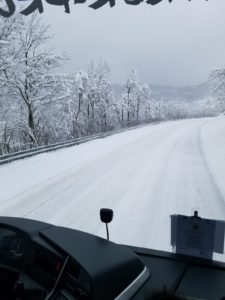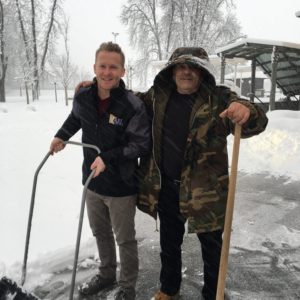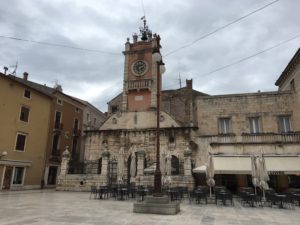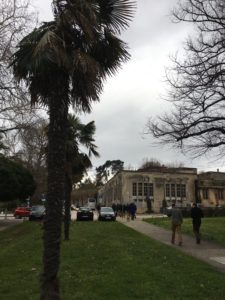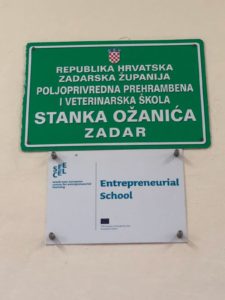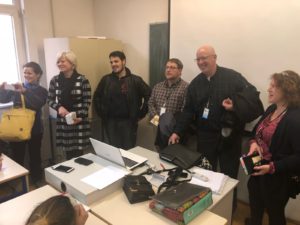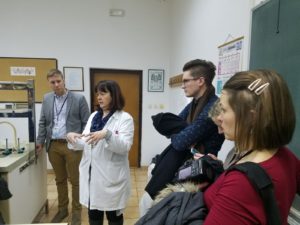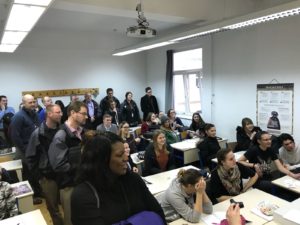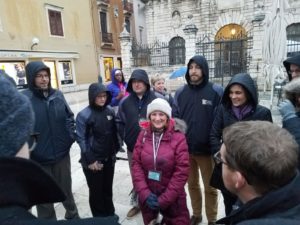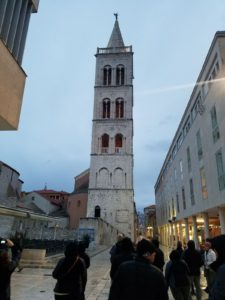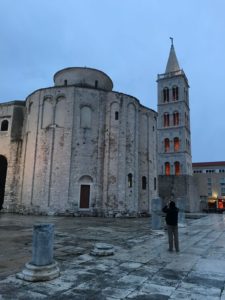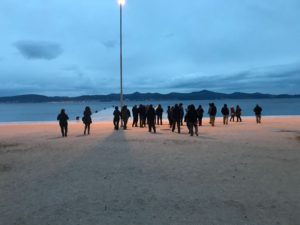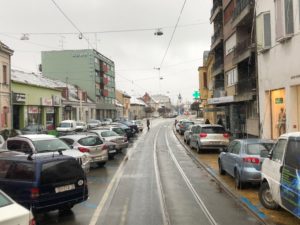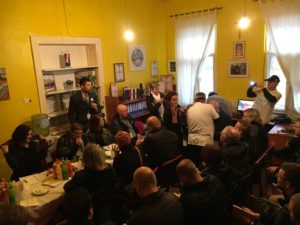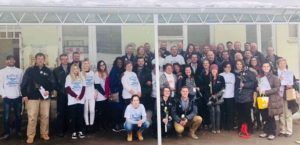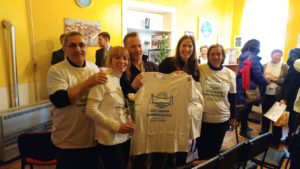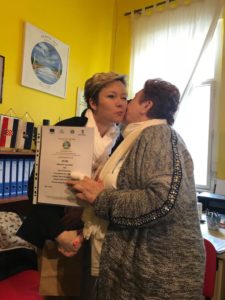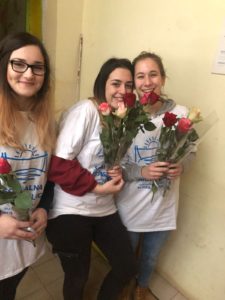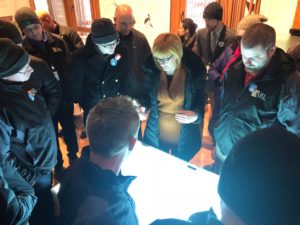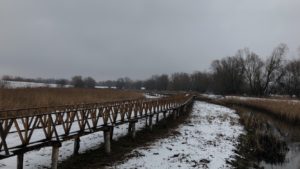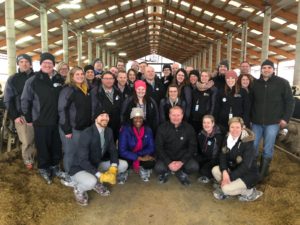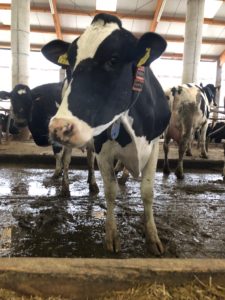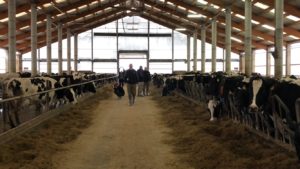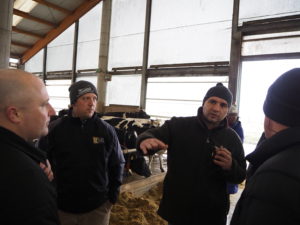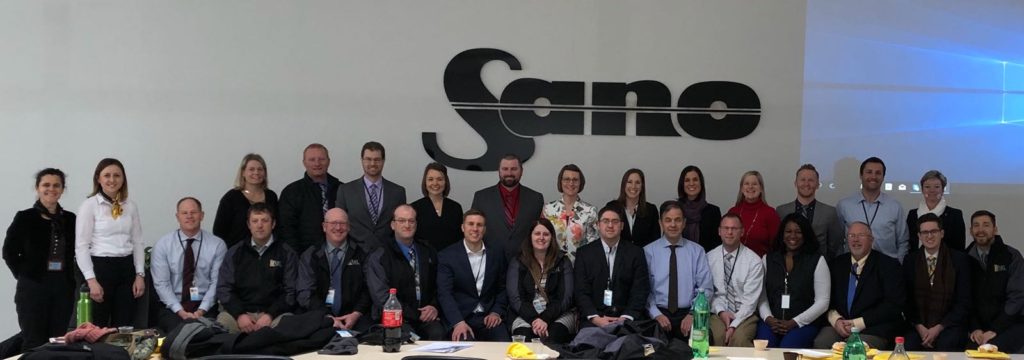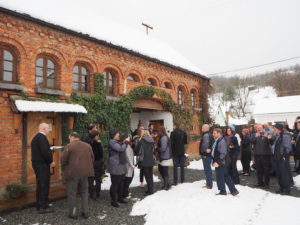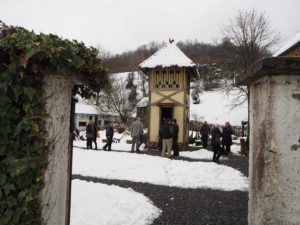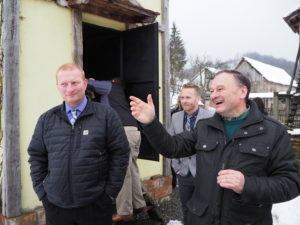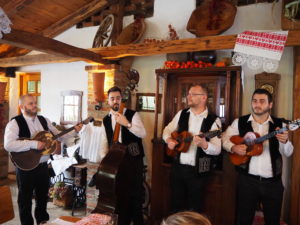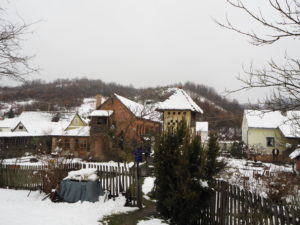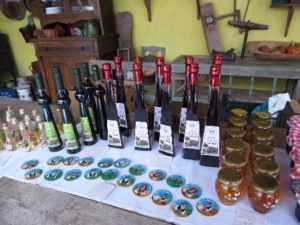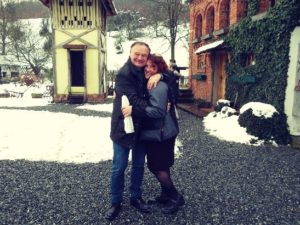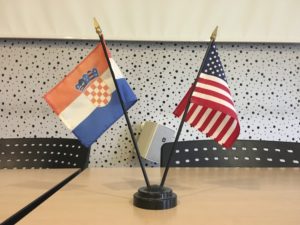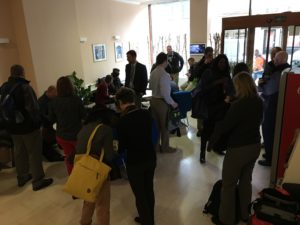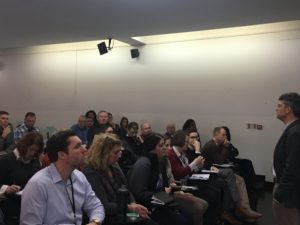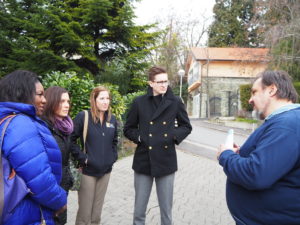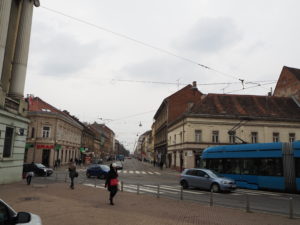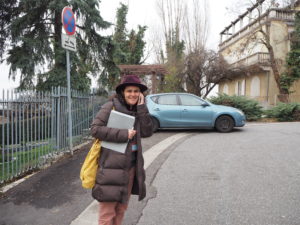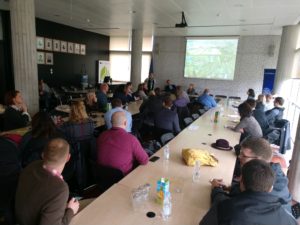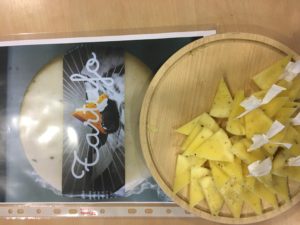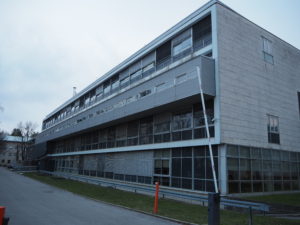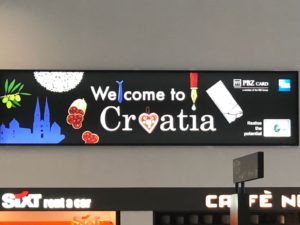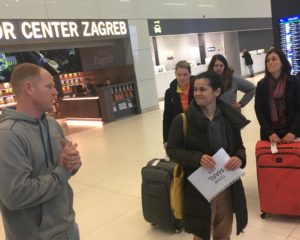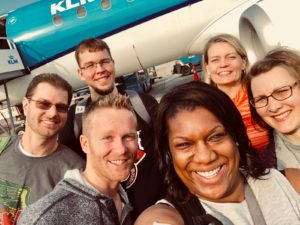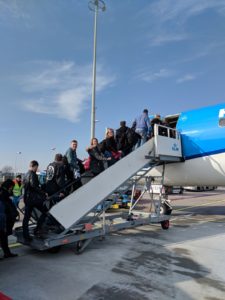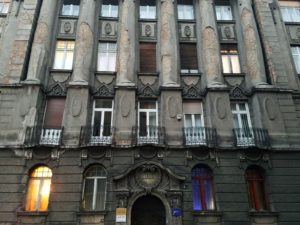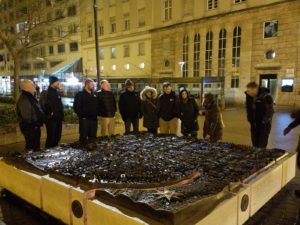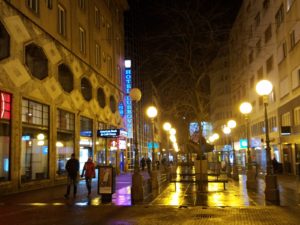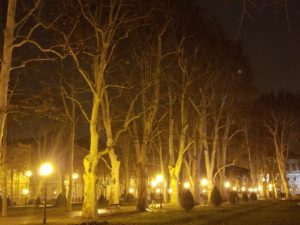Traveling to the Adriatic Coast – Zadar
A wintery welcome from MARL “snowclass” IX. The day started in Karlovac with 6”-8” of snow from the previous night with the snow still falling. The decision to push on was made even though stretches of highway were closed but an alternate route was available. The goal was to get to the coastal town of Zadar, which was not only challenged by the snowfall on the Eastern side of the mountains, but also by the famous “bura” winds on the West side.
After arriving in Zadar our first stop of the day was a quick walk through the old city center, and swing by the farmers market.
In the afternoon we headed to Stanka Ozanica school featuring programs in ag, nutrition and veterinary sciences. We were welcomed by principle Ms. Jelena Gulan who talked about the 3 and 4 year curriculums they were teaching at the school. The school is public with funding through the Croatia ministry of agriculture. After an engaged question and answer period we moved into a classroom with students who were seniors in the veterinary program. We were able to have an interactive dialogue with the students. We asked them what they thought of America, to which they replied: “McDonalds and autosteer tractors”. The class consisted of the majority of students being female. Student interest weighted heavy to work with small animals.
Principle Gulan moved us from the classroom to show us a couple of their labs. The first lab we viewed was a bakery, where students got hands on training around mixing and baking equipment. At the other lab we were informed on some of the things that are critical components to having a high quality extra virgin olive oil. We moved from the lab to our last stop being the greenhouse on the campus. We were shown some of the projects that were currently underway and explained to us some of the additional things that went on within the program. Member Steve Hoffman shared encouraging words with the students on the importance of farming and feeding Croatia.
Our next stop of the day was with a tour guide who gave us a tour of the “old town” part of the city. Our first stop was St. Anastasia’s cathedral. The bell tower is 184 feet, making it the tallest structure in that part of the city. It was built two stages with the first in 1452 and the upper floors were completed from 1890-1894. Our next stop was John Paul II square. We were able to view ruins from the 1st century BC to the 3rd century ad. An earthquake in the 6th century destroyed many of the structures. The rock from the forum was used to construct other buildings in the square. We made it to the coast to see the sea organ. We were able to hear organ sounds made by waves moving along the shore. Another feature in the area was the sun salutation which is made of solar panels collecting sunlight for energy during the day giving a light show during the evening coordinated by the tones of the organ. The evening concluded with dinner at Restaurant Skoblar.
